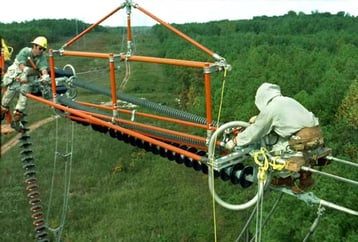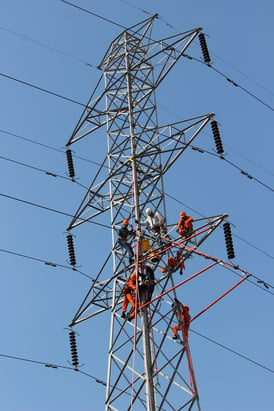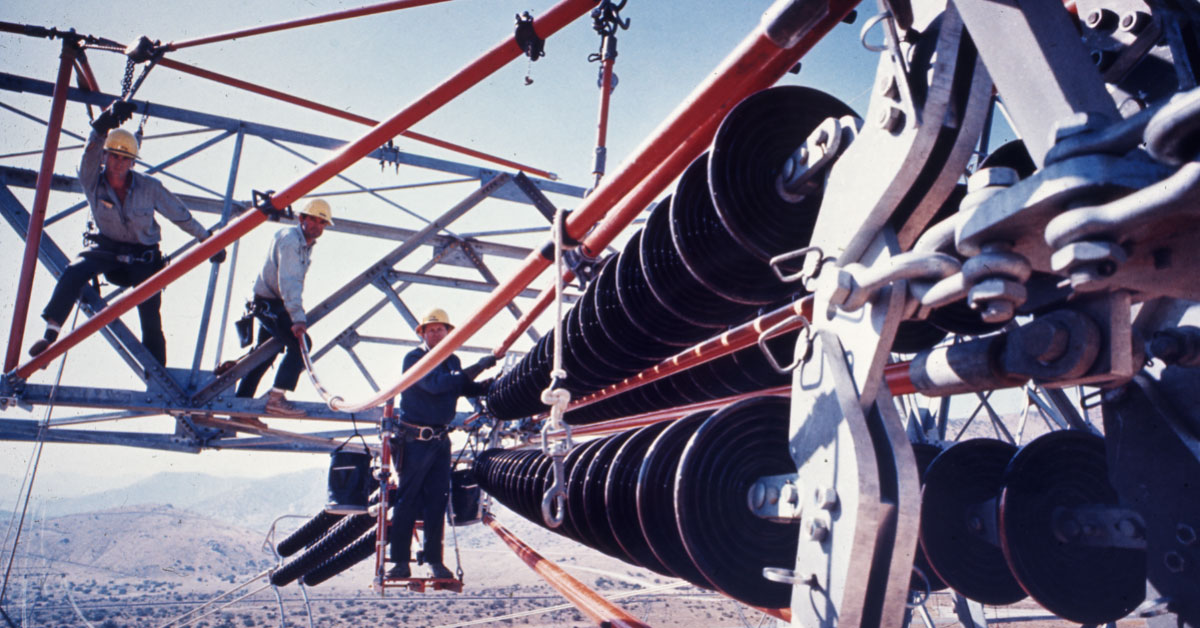As global leaders in tools and training for live-line maintenance of electrical transmission systems, the CHANCE® Lineman Tools and Equipment team is often asked for recommended lists of tools for various Transmission Line projects all over the world. These projects and systems are often quite complex, with a broad variety of tower designs, conductors, insulators, work methods, fixtures, hardware, connecting points, working loads, and accessibility challenges. Because there are so many variables, a generic list of tools isn’t likely to provide what will be necessary to get the work done. A more comprehensive list will be needed, so a gathering of information must begin.

Replacing Insulators & Insulator Strings During Live-Line Maintenance

While there are many routine maintenance tasks required for transmission lines, changing out insulators or insulator strings is one of the most common. CHANCE sells a variety of tools that can be used for replacing insulators using Live-Line work practices and procedures such as hotsticking or barehanding. To replace polymer insulators or porcelain/glass bell strings, the following information explains what must be known, and why, well before any lists are made, tools are ordered, and boots hit the dirt.
Understanding Transmission System Requirements

1. System Voltage Ratings
System voltage ratings will determine necessary insulator, conductor, hardware, and work practice specifications.
2. All Structure Types
Understanding all structure types is critical for knowing how tools, hardware, and workers will connect to the transmission structures.
3. Terrain and Climate
Slopes will affect strain values, and weather, landscape, and distance play key roles in accessibility.
4. Access, Available Tools, and Work Methods
No project begins without a thorough understanding of how to get there, what will be used, and how it will get done.
5. Additional Maintenance Tasks to be Performed
If other hardware will be changed out with the insulators, additional tools may be required.
Live-Line Maintenance Materials
%20(1).png?width=334&name=MicrosoftTeams-image%20(5)%20(1).png)
1. Insulator Size, Material, Weight, and Quantities Per String
Insulators can be fragile and must be handled carefully by tools that fit properly and can handle the weight.
2. Conductor Bundle Type, Specifications, and Hardware
Conductor bundle type, specifications, and hardware determines how loads will be handled, connections get made, and material is moved.
3. Dead End Connector Type
Bolted dead ends require different tools than compression dead ends.
Work Practices for Live-Line Maintenance
1. MAD and MAID Distances
MAD and MAID distances are of utmost importance for keeping workers safe in an energized environment.
2. Rigging Safety Factor
Rigid adherence to a suitable safety factor helps minimize the risk of overloading equipment and having catastrophic accidents.
3. Maximum Strain Tension Values Per Conductor
Maximum strain tension values per conductor must be known to ensure all load-bearing tools being used have the necessary rated working load to handle the stresses involved
Selecting the Transmission Live-Line Maintenance
Once furnished with these crucial details, plus detailed system and hardware drawings, a thorough and accurate list of tools can be suggested. In addition, our world-class CHANCE Tool Demonstrator Team can come to you on-site and teach your crews how to properly, efficiently, and SAFELY perform the necessary work your specific system requires. Our renowned Tool Demonstrators are journeyman linemen carrying on the practice of teaching Transmission Maintenance, a service that CHANCE has been providing all over the Earth since the 1930s.
CHANCE Transmission Project Checklist
To begin a conversation with the CHANCE Lineman tools and Equipment Team about your Transmission project, download our convenient Transmission Project Tools and Equipment Checklist, fill it out, gather the listed information, then contact your HPS Customer Service Representative or Territory Manager to get the ball rolling.
To talk with us about CHANCE Live-Line Training, visit our lineman tools training site, fill out the form, or download the Training Brochure, fill out the information, and contact your HPS Customer Service Representative or Territory Manager.

